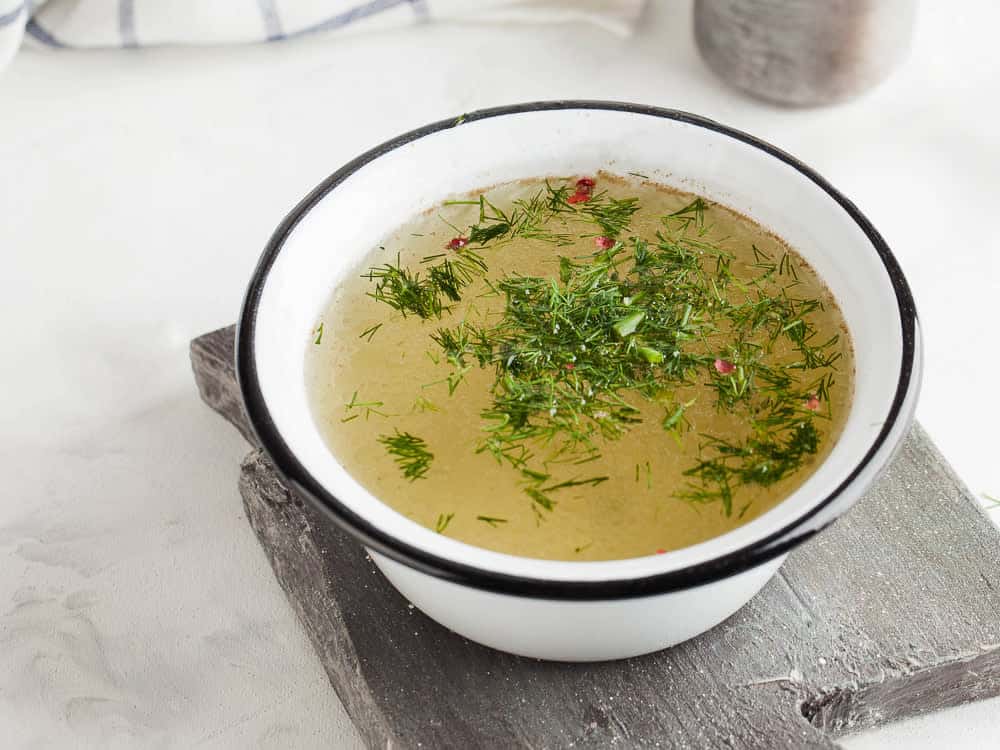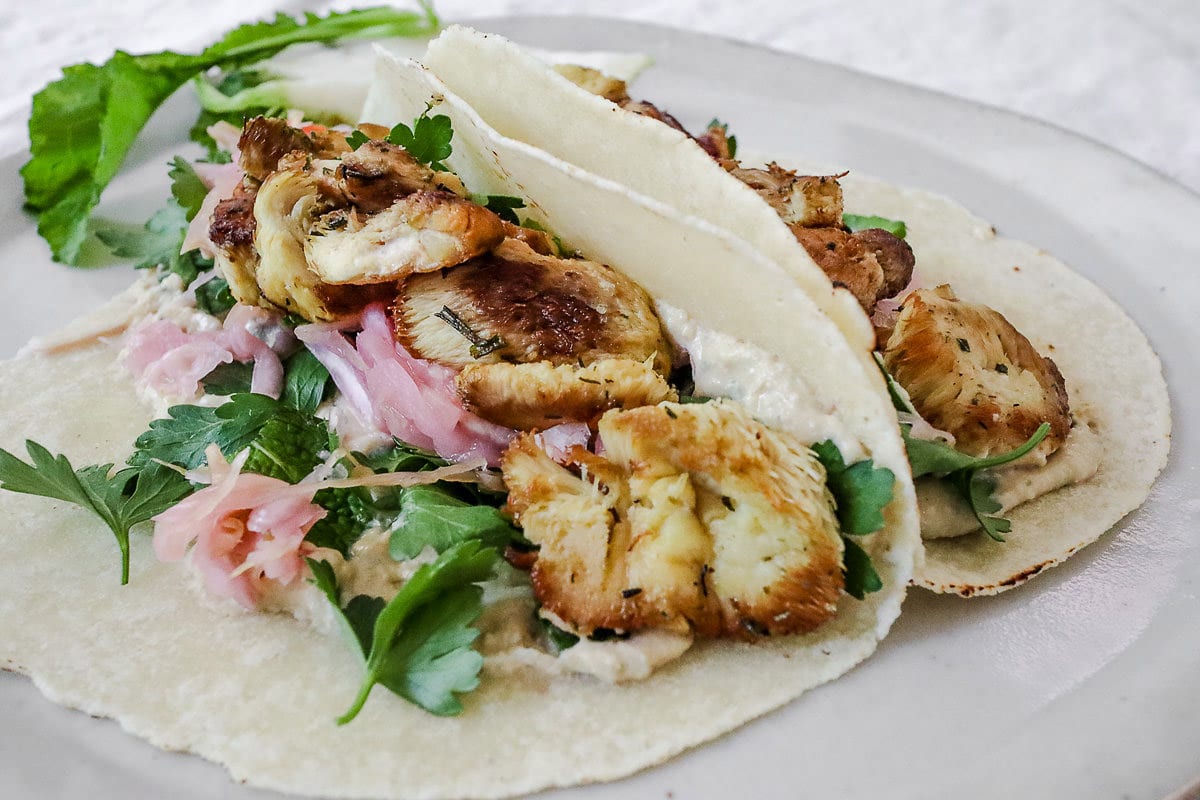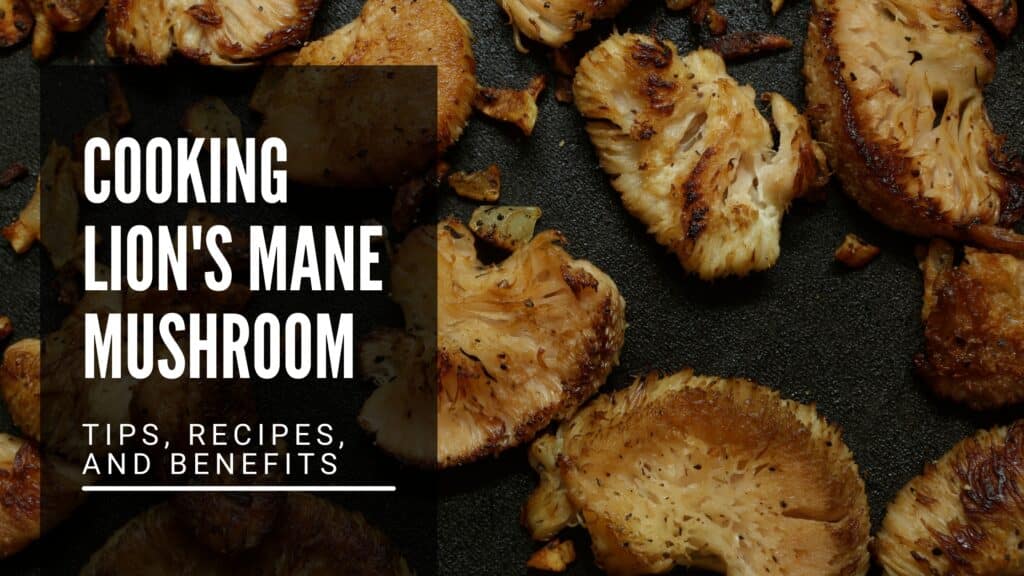Lion’s Mane Mushroom is a true gem in the world of fungi, renowned for its distinctive appearance and impressive health benefits. Its shaggy, white clusters resemble a lion’s mane, making it a standout ingredient in any dish. But this mushroom is more than just a pretty face; it’s a powerhouse of nutrition and flavor.
In this guide, you’ll discover essential tips for cooking Lion’s Mane Mushroom, explore delicious recipes, and learn about its numerous health benefits. Whether you’re a seasoned chef or a home cook looking to try something new, Lion’s Mane Mushroom offers a delightful and nutritious addition to your culinary repertoire.
Quick Summary
- Lion’s Mane Mushroom: A culinary and health powerhouse.
- Nutritional Benefits: Supports brain health, immune function, and reduces inflammation.
- Cooking Tips: Clean without water, slice appropriately, and enjoy its mild, seafood-like flavor.
- Recipes: Sautéed Lion’s Mane, Mushroom Soup, and Mushroom Tacos.
What is Lion’s Mane Mushroom?

Lion’s Mane Mushroom (Hericium erinaceus) is a remarkable edible fungus known for its striking appearance and impressive health benefits. Picture a snowy white, shaggy cluster that looks like a lion’s mane or even a cascading waterfall of icicles. This unique structure makes it easy to identify in the wild and a fascinating ingredient to work within the kitchen.
Beyond its visual appeal, Lion’s Mane has been cherished in traditional Chinese medicine for centuries. It’s often referred to as “Nature’s Nutrient for the Neurons” because of its potential to support brain health. Recent studies suggest that compounds found in Lion’s Mane, such as hericenones and erinacines, may stimulate the growth of brain cells and protect against neurodegenerative diseases.
Lion’s Mane Mushroom isn’t just a brain booster; it’s also a culinary delight. Its texture is meaty and slightly chewy, with a flavor profile that many describe as subtly seafood-like, akin to crab or lobster. This makes it a versatile ingredient that can be used in a variety of dishes, from stir-fries to soups, or even as a meat substitute in vegetarian recipes.
Growing naturally on hardwood trees in North America, Europe, and Asia, Lion’s Mane can also be cultivated at home, making it accessible for culinary enthusiasts and health-conscious individuals alike. Whether for its unique taste or its potential health benefits, incorporating Lion’s Mane Mushroom into your diet can be a rewarding experience for both the palate and the body.
Why Cook with Lion’s Mane Mushroom?
Cooking with Lion’s Mane Mushroom is a delightful experience, offering both exceptional flavor and impressive health benefits. Here’s why this unique fungus deserves a spot in your kitchen:
Culinary Versatility and Flavor
Lion’s Mane Mushroom stands out with its mild, slightly sweet taste that many liken to seafood such as crab or lobster. This makes it an excellent meat substitute in vegetarian and vegan dishes, providing a rich, savory flavor without overpowering other ingredients. Its texture is firm yet tender, making it perfect for sautéing, grilling, or incorporating into soups and stews.
Ease of Preparation
Preparing Lion’s Mane Mushroom is straightforward and requires minimal effort. Here’s a quick guide to get started:
- Cleaning: Simply brush off any dirt with a soft brush. Avoid soaking or washing with water to maintain its delicate texture.
- Slicing: Depending on your recipe, you can slice it into steaks, shred it for a crab-like texture, or chop it into bite-sized pieces.
- Cooking: Its versatile nature means you can sauté, grill, or roast it. Try seasoning it lightly with salt, pepper, and a splash of olive oil to let its natural flavors shine.
Sustainability and Accessibility
Lion’s Mane Mushroom is not only good for you but also good for the planet. It grows naturally on decaying hardwood trees, playing a vital role in the ecosystem by breaking down dead wood and returning nutrients to the soil. Additionally, it can be cultivated at home with grow kits, making it an accessible option for those who enjoy gardening or want to reduce their carbon footprint by growing their own food.
Nutritional Benefits of Lion’s Mane Mushroom
Lion’s Mane Mushroom is more than just a culinary delight; it’s a nutritional powerhouse packed with compounds that can significantly enhance your health. Here’s a deeper look at what makes this unique fungus so beneficial:
Rich in Antioxidants
Lion’s Mane is loaded with antioxidants, which play a crucial role in protecting your cells from damage caused by free radicals. These unstable molecules can contribute to aging and the development of various diseases. By incorporating Lion’s Mane into your diet, you’re giving your body a natural defense against oxidative stress.
Supports Brain Health
One of the standout benefits of Lion’s Mane Mushroom is its potential to boost brain health. This mushroom contains hericenones and erinacines, compounds that have been shown to stimulate the production of nerve growth factor (NGF). NGF is essential for the growth and maintenance of neurons, which are the building blocks of the nervous system. Regular consumption of Lion’s Mane may improve cognitive function, enhance memory, and potentially reduce the risk of neurodegenerative diseases like Alzheimer’s and Parkinson’s.
Immune System Booster
The beta-glucans found in Lion’s Mane Mushroom are known for their immune-boosting properties. Beta-glucans are a type of polysaccharide that can enhance the activity of macrophages, which are cells that detect and destroy pathogens in the body. By boosting your immune system, Lion’s Mane helps your body fight off infections more effectively.
Supports Digestive Health
Lion’s Mane Mushroom is also beneficial for your digestive system. It contains polysaccharides that act as prebiotics, which are compounds that feed the beneficial bacteria in your gut. A healthy gut microbiome is essential for proper digestion, nutrient absorption, and a robust immune system. By promoting a balanced gut flora, Lion’s Mane can help prevent digestive issues and improve overall gut health.
Enhances Mood and Reduces Anxiety
Emerging research suggests that Lion’s Mane Mushroom may have a positive impact on mental health. Studies have shown that it can help reduce symptoms of anxiety and depression. The anti-inflammatory effects and its ability to stimulate the production of NGF contribute to improved mental well-being. Consuming Lion’s Mane regularly might help enhance mood, reduce anxiety, and promote a sense of calm.
Nutritional Profile
Here’s a closer look at the nutritional composition of Lion’s Mane Mushroom per 100 grams:
- Calories: Low, making it a great addition to any diet.
- Protein: Contains all essential amino acids, making it a good source of protein for vegetarians and vegans.
- Fiber: High in dietary fiber, aiding in digestion and maintaining healthy cholesterol levels.
- Vitamins: Rich in vitamins such as B1 (thiamine), B2 (riboflavin), and B3 (niacin), which are essential for energy production and overall cellular function.
- Minerals: Contains significant amounts of potassium, zinc, and iron, contributing to heart health, immune function, and oxygen transport in the blood.
Preparation Tips for Lion’s Mane Mushroom
- Cleaning: Gently brush off any dirt. Avoid washing with water to maintain its texture.
- Slicing: Cut the mushroom into slices or chunks, depending on the recipe.
- Flavor: Lion’s Mane has a mild, seafood-like flavor, making it a great substitute for meat or seafood in various dishes.
Simple and Delicious Lion’s Mane Mushroom Recipes
Recipe 1: Sautéed Lion’s Mane Mushroom

Ingredients:
- 1 large Lion’s Mane Mushroom
- 2 tbsp olive oil
- 2 garlic cloves, minced (optional for extra flavor)
- Salt and pepper to taste
- Fresh herbs (such as thyme or parsley) for garnish
Instructions:
- Prepare the Mushroom: Start by gently cleaning the Lion’s Mane Mushroom with a soft brush to remove any dirt. Avoid using water as it can make the mushroom soggy. Once cleaned, slice the mushroom into even, thick pieces about 1/4 to 1/2 inch thick. This helps ensure they cook evenly.
- Heat the Oil: In a large skillet, heat the olive oil over medium heat. Make sure the oil is hot before adding the mushrooms; this helps to achieve a nice sear and prevents them from becoming too greasy.
- Sauté the Mushrooms: Place the sliced mushrooms in the skillet in a single layer, ensuring they are not overcrowded. Let them cook undisturbed for about 3-4 minutes. This initial searing helps develop a golden-brown crust.
- Flip and Season: Flip the mushroom slices and cook for another 3-4 minutes on the other side until they are evenly browned and crispy on the edges. If you are using garlic, add the minced garlic to the pan now and sauté for an additional 1-2 minutes until fragrant. Be careful not to burn the garlic.
- Season to Taste: Sprinkle salt and pepper over the mushrooms while they are still in the pan. Toss them gently to ensure the seasoning is evenly distributed. If desired, add a pinch of fresh herbs like thyme or parsley for added flavor.
- Finish and Serve: Remove the mushrooms from the heat once they are golden brown and tender. Transfer them to a serving dish. Garnish with more fresh herbs if desired.
- Serving Suggestions: Serve the sautéed Lion’s Mane Mushrooms hot. They make an excellent side dish, or you can use them as a topping for salads, pasta, or even as a filling for sandwiches and wraps. Their meaty texture and savory flavor also pair well with grilled vegetables or a protein of your choice.
Recipe 2: Lion’s Mane Mushroom Soup

Ingredients:
- 2 cups Lion’s Mane Mushroom, chopped
- 1 onion, diced
- 2 garlic cloves, minced
- 2 tbsp olive oil
- 4 cups vegetable broth
- 1 cup coconut milk
- 1 tsp thyme
- 1 tsp rosemary
- Salt and pepper to taste
Instructions:
- Prepare the Ingredients: Start by cleaning the Lion’s Mane Mushroom with a soft brush to remove any dirt. Avoid using water to maintain its texture. Chop the mushroom into small, bite-sized pieces. Dice the onion and mince the garlic cloves.
- Sauté the Aromatics: In a large pot, heat the olive oil over medium heat. Once hot, add the diced onion and sauté for about 3-4 minutes until it becomes translucent. Stir occasionally to prevent burning.
- Add the Garlic: Add the minced garlic to the pot and sauté for an additional 1-2 minutes until fragrant. Be careful not to burn the garlic, as it can become bitter.
- Cook the Mushrooms: Add the chopped Lion’s Mane Mushroom to the pot. Cook for about 5-7 minutes, stirring occasionally, until the mushrooms are golden brown and tender. The mushrooms should release some of their moisture and absorb the flavors of the garlic and onion.
- Add Herbs and Seasoning: Sprinkle in the thyme and rosemary. Stir well to combine with the mushrooms and aromatics. Season with a pinch of salt and pepper.
- Add the Broth: Pour in the vegetable broth and bring the mixture to a boil. Once boiling, reduce the heat to low and let it simmer for about 20 minutes. This allows the flavors to meld together beautifully.
- Incorporate the Coconut Milk: After simmering, stir in the coconut milk. This adds a creamy, rich texture to the soup without using dairy. Let the soup simmer for another 5 minutes to heat the coconut milk through.
- Blend the Soup: For a smooth consistency, use an immersion blender directly in the pot to blend the soup until smooth. Alternatively, carefully transfer the soup in batches to a countertop blender. Be cautious with hot liquids and ensure the lid is secure. Blend until smooth and return to the pot.
- Final Seasoning: Taste the soup and adjust the seasoning as needed with additional salt and pepper. If the soup is too thick, you can add a bit more vegetable broth or water to reach your desired consistency.
- Serve: Ladle the hot soup into bowls. For an extra touch, garnish with a drizzle of olive oil, a sprinkle of fresh herbs, or a pinch of black pepper.
Recipe 3: Lion’s Mane Mushroom tacos

Ingredients:
- 2 cups Lion’s Mane Mushroom, shredded
- 1 tbsp olive oil
- 1 tsp cumin
- 1 tsp paprika
- Salt and pepper to taste
- Tortillas
- Toppings: avocado, salsa, lime, cilantro
Instructions:
- Prepare the Mushrooms: Start by gently cleaning the Lion’s Mane Mushroom with a soft brush to remove any dirt. Avoid using water to maintain its texture. Once clean, shred the mushroom into small pieces using your hands or a fork.
- Heat the Pan: In a large skillet, heat the olive oil over medium heat. Ensure the oil is hot before adding the mushrooms to get a good sear.
- Cook the Mushrooms: Add the shredded Lion’s Mane Mushroom to the skillet. Spread them out evenly to ensure they cook uniformly. Let them cook for about 3-4 minutes without stirring to allow them to develop a nice golden-brown color.
- Season the Mushrooms: Sprinkle the cumin, paprika, salt, and pepper over the mushrooms. Stir well to coat the mushrooms evenly with the spices. Continue to cook for another 5-6 minutes, stirring occasionally, until the mushrooms are tender and slightly crispy on the edges.
- Warm the Tortillas: While the mushrooms are cooking, warm the tortillas in a separate skillet over low heat. You can also warm them in the oven wrapped in foil at 350°F for about 10 minutes.
- Assemble the Tacos: Once the mushrooms are cooked, remove them from the heat. Fill each warm tortilla with a generous portion of the mushroom mixture.
- Add Toppings: Top the tacos with slices of avocado, spoonfuls of salsa, a squeeze of fresh lime juice, and a sprinkle of chopped cilantro. Feel free to add any other favorite toppings such as shredded lettuce, cheese, or sour cream.
- Serve and Enjoy: Serve the Lion’s Mane Mushroom tacos immediately while they’re hot. These tacos are perfect for a quick weeknight dinner or a fun, healthy twist on taco night.
Conclusion
Cooking with Lion’s Mane Mushroom is a journey worth embarking on, combining culinary creativity with substantial health benefits. This extraordinary mushroom not only brings a unique flavor and texture to your dishes but also offers a host of nutritional perks.
From boosting brain health and supporting your immune system to reducing inflammation and promoting digestive health, Lion’s Mane Mushroom is truly a superfood. Its mild, seafood-like flavor and versatile nature make it an excellent addition to a variety of recipes, whether you’re making a simple sauté, a hearty soup, or innovative tacos.
Incorporating Lion’s Mane Mushroom into your meals is an easy and delicious way to enhance your overall well-being. So why not give it a try? Your taste buds and your body will thank you.
References
- Chong, Pit Shan, et al. “Therapeutic Potential of Hericium Erinaceus for Depressive Disorder.” International Journal of Molecular Sciences, vol. 21, no. 1, 25 Dec. 2019, p. 163, https://doi.org/10.3390/ijms21010163.
- Jayachandran, Muthukumaran, et al. “A Critical Review on Health Promoting Benefits of Edible Mushrooms through Gut Microbiota.” International Journal of Molecular Sciences, vol. 18, no. 9, 8 Sept. 2017, p. 1934, www.ncbi.nlm.nih.gov/pmc/articles/PMC5618583/, https://doi.org/10.3390/ijms18091934.
- Kushairi, Naufal, et al. “Lion’s Mane Mushroom, Hericium Erinaceus (Bull.: Fr.) Pers. Suppresses H2O2-Induced Oxidative Damage and LPS-Induced Inflammation in HT22 Hippocampal Neurons and BV2 Microglia.” Antioxidants, vol. 8, no. 8, 1 Aug. 2019, p. 261, https://doi.org/10.3390/antiox8080261.
- Li, I-Chen, et al. “Neurohealth Properties OfHericium ErinaceusMycelia Enriched with Erinacines.” Behavioural Neurology, vol. 2018, 2018, pp. 1–10, https://doi.org/10.1155/2018/5802634.
- Mirończuk-Chodakowska, Iwona, et al. “Beta-Glucans from Fungi: Biological and Health-Promoting Potential in the COVID-19 Pandemic Era.” Nutrients, vol. 13, no. 11, 6 Nov. 2021, p. 3960, https://doi.org/10.3390/nu13113960.

